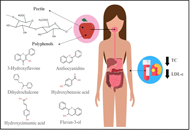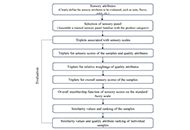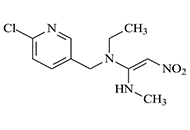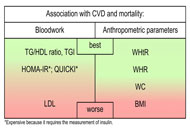Determination of neonicotinoid pesticides nitenpyram and dinotefuran by electroanalytical methods
Nitenpyram (NIT) and dinotefuran (DNF) are neonicotinoid pesticides commonly used in the production and storage of agricultural products, as well as in forests and gardens, for the purpose of protec
[...] Read more.
Nitenpyram (NIT) and dinotefuran (DNF) are neonicotinoid pesticides commonly used in the production and storage of agricultural products, as well as in forests and gardens, for the purpose of protection from insect pests. Although they are safer for mammals, their toxic effects on pollinators, such as bees, and their long-term accumulation in water and soil, are important problems. Therefore, it is crucial to ensure that their usage remains within certain specific limits and that their residues are quickly, precisely, and reliably monitored in various samples. In this review, electrochemical methods, which are voltammetry, amperometry, and potentiometry, for the determination of NIT and DNF in pure solutions, agricultural, and environmental samples by using various modified electrodes were reviewed. The results obtained from studies published since 2011 were compared, and the effectiveness of the selected methods was demonstrated. It was observed that the electrochemical methods, particularly voltammetry, used in the studies conducted for NIT and DNF yielded selective and sensitive results at detection limits at nmol L–1 levels. These methods also exhibited high precision and accuracy without being affected by the matrix of the studied samples, such as soil, water, or agricultural products.
Dilek Kul
View:1345
Download:31
Times Cited: 0
Nitenpyram (NIT) and dinotefuran (DNF) are neonicotinoid pesticides commonly used in the production and storage of agricultural products, as well as in forests and gardens, for the purpose of protection from insect pests. Although they are safer for mammals, their toxic effects on pollinators, such as bees, and their long-term accumulation in water and soil, are important problems. Therefore, it is crucial to ensure that their usage remains within certain specific limits and that their residues are quickly, precisely, and reliably monitored in various samples. In this review, electrochemical methods, which are voltammetry, amperometry, and potentiometry, for the determination of NIT and DNF in pure solutions, agricultural, and environmental samples by using various modified electrodes were reviewed. The results obtained from studies published since 2011 were compared, and the effectiveness of the selected methods was demonstrated. It was observed that the electrochemical methods, particularly voltammetry, used in the studies conducted for NIT and DNF yielded selective and sensitive results at detection limits at nmol L–1 levels. These methods also exhibited high precision and accuracy without being affected by the matrix of the studied samples, such as soil, water, or agricultural products.
 Effect of chronic apple consumption (Malus domestica Borkh.) on the lipid profile of adults with dyslipidemia: a systematic reviewOpen AccessSystematic ReviewAim: Cardiovascular disease (CVD) are among the main causes of death worldwide and dyslipidemias account for one of the risk factors for these diseases. Habitual apple consumption appears to be i [...] Read more.Luciana Melo de Farias ... Maria do Carmo de Carvalho e MartinsPublished: December 29, 2023 Explor Foods Foodomics. 2023;1:288–299
Effect of chronic apple consumption (Malus domestica Borkh.) on the lipid profile of adults with dyslipidemia: a systematic reviewOpen AccessSystematic ReviewAim: Cardiovascular disease (CVD) are among the main causes of death worldwide and dyslipidemias account for one of the risk factors for these diseases. Habitual apple consumption appears to be i [...] Read more.Luciana Melo de Farias ... Maria do Carmo de Carvalho e MartinsPublished: December 29, 2023 Explor Foods Foodomics. 2023;1:288–299 Application of fuzzy logic techniques for sensory evaluation of plant-based extrudates fortified with bioactive compoundsOpen AccessOriginal ArticleAim: This study aims to evaluate the sensory profile of corn-based extrudates fortified with phytosterol and pea protein isolates (PPI) using the fuzzy logic technique to assess similarity values [...] Read more.Mekala Pavani ... Sushil Kumar SinghPublished: December 29, 2023 Explor Foods Foodomics. 2023;1:272–287
Application of fuzzy logic techniques for sensory evaluation of plant-based extrudates fortified with bioactive compoundsOpen AccessOriginal ArticleAim: This study aims to evaluate the sensory profile of corn-based extrudates fortified with phytosterol and pea protein isolates (PPI) using the fuzzy logic technique to assess similarity values [...] Read more.Mekala Pavani ... Sushil Kumar SinghPublished: December 29, 2023 Explor Foods Foodomics. 2023;1:272–287 Determination of neonicotinoid pesticides nitenpyram and dinotefuran by electroanalytical methodsOpen AccessReviewNitenpyram (NIT) and dinotefuran (DNF) are neonicotinoid pesticides commonly used in the production and storage of agricultural products, as well as in forests and gardens, for the purpose of protec [...] Read more.Dilek KulPublished: December 29, 2023 Explor Foods Foodomics. 2023;1:258–271
Determination of neonicotinoid pesticides nitenpyram and dinotefuran by electroanalytical methodsOpen AccessReviewNitenpyram (NIT) and dinotefuran (DNF) are neonicotinoid pesticides commonly used in the production and storage of agricultural products, as well as in forests and gardens, for the purpose of protec [...] Read more.Dilek KulPublished: December 29, 2023 Explor Foods Foodomics. 2023;1:258–271 Evaluation of the most common parameters used to describe cardiovascular risk and the influence of ketogenic and Mediterranean dietOpen AccessReviewCardiovascular disease (CVD) stands as the leading global cause of mortality, underscoring the critical need for practical tools to assess CVD risk at an early stage. An accessible approach involves [...] Read more.Leo Karl Hanke ... Paola MolettieriPublished: December 28, 2023 Explor Foods Foodomics. 2023;1:244–257
Evaluation of the most common parameters used to describe cardiovascular risk and the influence of ketogenic and Mediterranean dietOpen AccessReviewCardiovascular disease (CVD) stands as the leading global cause of mortality, underscoring the critical need for practical tools to assess CVD risk at an early stage. An accessible approach involves [...] Read more.Leo Karl Hanke ... Paola MolettieriPublished: December 28, 2023 Explor Foods Foodomics. 2023;1:244–257